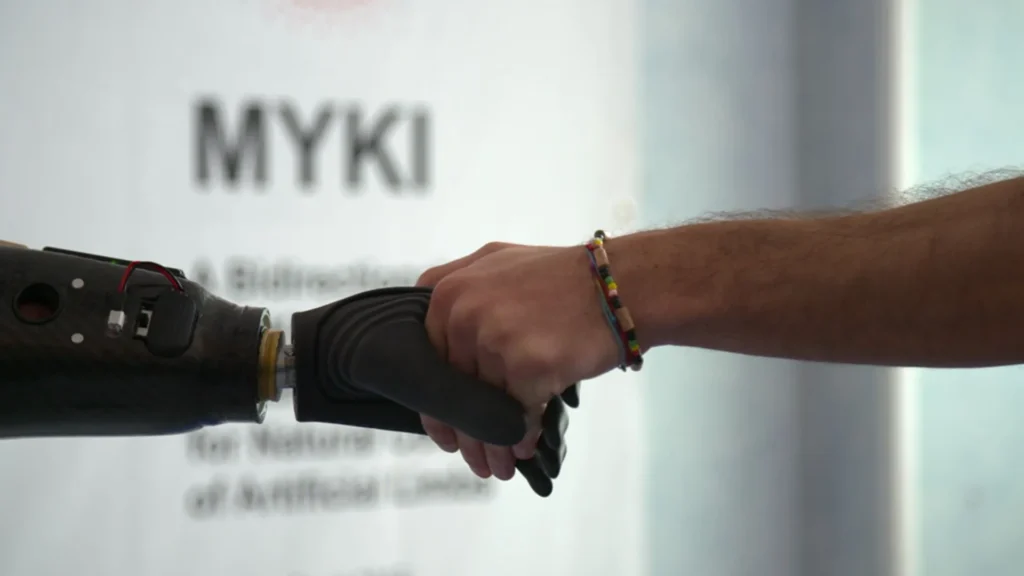Researchers at the Sant’Anna School of Advanced Studies in Pisa have marked a new chapter in the history of prosthetics by developing the world’s first robotic hand controlled by magnets. This breakthrough opens up a world of possibilities for amputees, such as a 34-year-old Italian man named Daniel, who was the first patient to use the system.
Mia-Hand: A prosthesis that adapts to the human body
The prosthesis, known as Mia-Hand, is capable of reproducing the movements of a human hand and measuring the force needed to manipulate fragile objects. All without wires or electrical connections, only by means of small magnets implanted in the muscles of the forearm. These magnets, moving with muscle contraction, are able to transmit signals that an algorithm decodes to control the movement of the fingers.
The prosthesis is capable of reproducing the movements of a human hand. Source: Sant’Anna School of Advanced Studies of Pisa.
This has been achieved thanks to a system developed within the MYKI project, funded by the European Commission.“There are 20 muscles in the forearm that control the hand,” explained Christian Cipriani, professor in charge of the project.“The innovation lies in harnessing these residual muscles so that the brain can continue to give movement commands, even after an amputation.”
A step forward for state-of-the-art hand prostheses
The success of the experiment with Daniel has been so positive that the researchers are ready to expand testing to a wider group of amputees. The system is especially valuable because it allows patients to perform everyday tasks such as opening jars, using tools, and controlling the force needed to hold delicate objects. According to Daniel, “It’s like moving my hand again.”

With the collaboration of several medical centers, surgeons implanted six small magnets in the residual muscles of Daniel’s arm, which has allowed for a successful integration between his body and the robotic hand. In the near future, this kind of technology could radically improve the quality of life for thousands of people with amputees.
Importantly, the team at the Sant’Anna School of Advanced Studies is already working on extending this technological breakthrough to more patients. The MYKI project and other research programs funded by both Europe and the Italian Ministry of Universities and Research are focused on developing practical solutions that are accessible to as many people as possible.
Follow us on social networks and don’t miss any of our publications!
YouTube LinkedIn Facebook Instagram X
Source and photos: Sant’Anna School of Advanced Studies of Pisa

